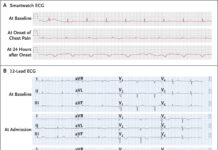Case Presentation
A 40-year-old man from Ethiopia presented to the hospital with painless swelling beneath his chin and at the back of his neck. In addition, it lasted for six months. At about three months, he began experiencing itchy, raised swellings on his forearms, thighs, legs, and face, which worsened during the day and with exposure to sunlight. Two months before the presentation, new swellings emerged in his armpits and groin. Despite treatment with oral loratadine and topical steroids for suspected nodular urticaria, there was no improvement. His condition deteriorated further over the past few weeks, with increased fatigue, loss of appetite, and epigastric pain. Three days before seeking medical help, he developed a high fever, headache, chills, and worsened epigastric pain.
Examination
During the examination, he had a rapid pulse, a slightly elevated temperature, and lower-than-normal oxygen saturation. His face appeared swollen with reddened eyes. Multiple firm, painless lymph nodes of varying sizes were found in several areas, including the neck, armpits, and groin. There were no signs of enlarged organs. A dermatologist noted widespread urticarial papules on the face, neck, and arms, along with a red rash on the trunk and eczematous patches on the limbs
The patient’s medical tests indicated normal liver and kidney function, blood clotting, and lipid levels. Tests for viral hepatitis and HIV were negative. While one test for syphilis (VDRL) was positive, another (TPHA) was negative. His white blood cell count was 4500 cells/mm3, with 65% neutrophils, 19% lymphocytes, and 9% eosinophils. Hemoglobin was 13.7 g/dl, and his platelet count was 284,000 cells/mm3. His blood sugar levels were within the normal range on two occasions.
A lymph node biopsy revealed extensive growth and increased blood vessel formation in specific areas, along with eosinophil proliferation and infiltration and fibrotic changes. However, the serum platelet-derived growth factor receptor alpha (PDGFRA) test yielded negative results.
Management
With a diagnosis of PDGFRA-negative Kimura’s disease, the doctors started treatment with a gradually decreasing dosage of prednisolone, starting at 30 mg/day. Within two weeks of therapy, all symptoms, including lymph node swelling and skin nodules, subsided. However, four months later, after discontinuing prednisolone, the symptoms recurred. Reintroducing prednisolone at the same dosage brought relief but led to recurrence upon attempting a rapid taper.
To manage the condition, a slow taper was initiated, reducing the prednisolone dosage by 5 mg each month. This approach yielded positive results, with the patient remaining symptom-free while on a maintenance dose of 5 mg of prednisolone one year later.
Kimura’s Disease
Kimura’s disease (KD) is an uncommon, long-term inflammatory condition characterized by abnormal tissue growth in the lymph nodes and subcutaneous layers and an increase in blood and lymph vessels. While the exact cause is unknown, experts believe it may stem from an immune system malfunction or an allergic reaction to a persistent trigger, such as a bug bite, virus, or tumour. Genetics and sex hormones may also play a role in its development.
Typically, KD affects young Asian men aged 20 to 40, though it’s rare in other ethnicities. It’s most commonly reported in China, Japan, and Southeast Asia, with a male-to-female ratio of 3:1. While predominantly seen in Asians, there have been rare cases in black individuals, mostly in the USA, Nigeria, Senegal, and Tunisia. The condition usually manifests as painless nodules under the skin of the head and neck, often accompanied by swollen lymph nodes in the region. These nodules are usually solitary and found on one side of the body. KD is also associated with allergic conditions like asthma and chronic hives. Blood tests may reveal elevated levels of eosinophils and IgE antibodies.
Diagnosis of Kimura’s disease
A definitive diagnosis of KD requires examining the affected tissue under a microscope. Common findings include an overgrowth of lymph node tissue, increased blood vessel formation, preserved node structure, and infiltration of eosinophils, a type of white blood cell. Less common features may include tissue necrosis, abscesses, and deposits of immune proteins. Differential diagnoses may include similar conditions like angiolymphoid hyperplasia, Hodgkin’s disease, or Kaposi’s sarcoma, each with distinct histological features.
KD’s clinical course is usually benign, with up to a quarter of patients experiencing spontaneous remission. Treatment options vary and lack large-scale studies to guide decisions. Surgical removal of nodules is often preferred, especially for solitary lesions, as it eliminates the risk of spreading the disease. For cases with extensive involvement or unclear margins, surgery combined with steroids or radiotherapy may be recommended. Radiotherapy is particularly useful for recurrent cases, with varying doses proving effective. Some research suggests a potential benefit from the drug imatinib in patients with a specific genetic marker.
Recurrence of KD is not uncommon, especially in the head and neck region, affecting up to a quarter of patients. Regular follow-up is essential to monitor for any relapses and adjust treatment as needed.
Conclusion
This report aims to establish foundational evidence concerning the diagnosis and non-surgical treatment of Kimura’s disease in Ethiopia and Africa. It emphasizes the unique presentation of the disease in African patients compared to those in Asian countries. Furthermore, it underscores the tendency for disease relapse when steroid treatments are tapered prematurely and abruptly. By shedding light on these aspects, the report contributes to a better understanding of Kimura’s disease within the African context and underscores the importance of tailored management strategies for patients in this region.




